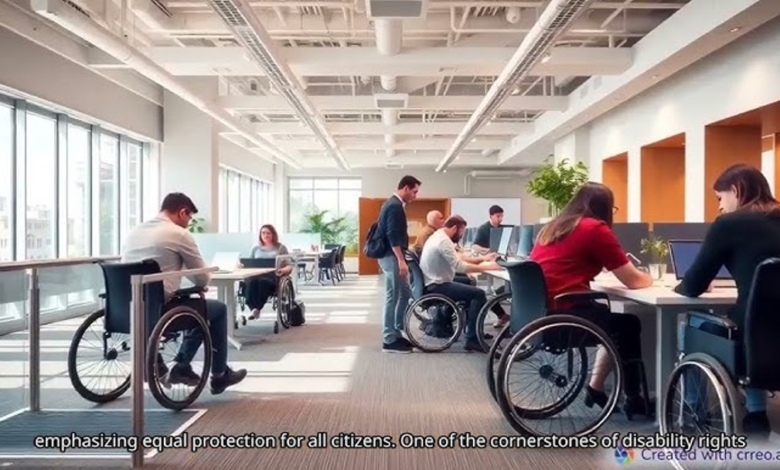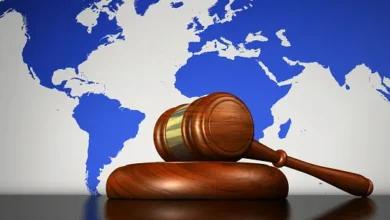Civil Rights Law: Protecting Equality and Justice for All
Civil rights law protects equality in employment, housing, and voting. Learn your rights, legal protections, and how to fight discrimination today.

Civil rights law forms the bedrock of equitable societies, safeguarding fundamental freedoms and ensuring equal treatment for all individuals regardless of race, gender, religion, disability, or other protected characteristics. These laws emerged from centuries of struggle against systemic oppression, evolving through landmark legislation and court rulings to dismantle discriminatory practices. From the abolition of slavery to the modern fight for LGBTQ+ rights, civil rights law continues to shape policies that promote inclusion and justice. This article explores its historical roots, key legal milestones, and contemporary challenges, highlighting its enduring role in advancing human dignity and fairness.
At its core, civil rights law seeks to balance power structures by protecting vulnerable groups from discrimination in employment, education, housing, and public services. The Civil Rights Act of 1964 remains a watershed moment, outlawing segregation and employment discrimination, while subsequent laws like the Americans with Disabilities Act (ADA) have expanded protections. Yet, persistent inequities—such as voter suppression, police brutality, and algorithmic bias—demonstrate the ongoing need for vigilance and reform. As societies grow more diverse, civil rights law must adapt to new frontiers of injustice, ensuring its principles remain relevant in an ever-changing world.
Civil Rights Law
The Historical Foundations of Civil Rights Law
The roots of civil rights law stretch deep into human history, emerging from centuries of struggle against oppression and inequality. While modern civil rights frameworks took shape in the 20th century, their philosophical and legal foundations were laid much earlier, forged in the fires of abolitionist movements, Enlightenment thinking, and the painful contradictions of democratic societies that promised liberty while permitting systemic discrimination. The concept of inherent human rights can be traced to ancient civilizations, with early expressions appearing in the Code of Hammurabi (1754 BCE) and the Edicts of Ashoka (3rd century BCE). However, the philosophical underpinnings of modern civil rights law emerged during the Enlightenment, when thinkers like John Locke and Jean-Jacques Rousseau articulated theories of natural rights and social contracts. These ideas found practical expression in foundational documents such as the U.S. Declaration of Independence (1776) and the French Declaration of the Rights of Man (1789), which proclaimed equality as a fundamental principle while failing to extend these rights universally in practice. The 19th century saw the first major legal battles for civil rights in the United States, centered on the abolition of slavery. The Emancipation Proclamation (1863) and the subsequent ratification of the Thirteenth Amendment (1865) abolished slavery, while the Fourteenth Amendment (1868) established birthright citizenship and equal protection under law, and the Fifteenth Amendment (1870) guaranteed voting rights regardless of race. These Reconstruction-era amendments created the constitutional framework for modern civil rights law, though their promises would remain unfulfilled for nearly a century due to violent resistance and legal circumvention.
Key Legislation in Civil Rights Law
Several pivotal laws have shaped civil rights protections in the United States and beyond. The Civil Rights Act of 1964 remains one of the most comprehensive anti-discrimination laws, prohibiting segregation in public spaces and employment discrimination. The Americans with Disabilities Act (ADA) of 1990 ensured accessibility for people with disabilities, while the Fair Housing Act of 1968 combatted housing discrimination. Internationally, documents like the Universal Declaration of Human Rights (1948) have influenced civil rights frameworks worldwide. These laws not only address overt discrimination but also tackle systemic inequities, ensuring marginalized groups have legal recourse against injustice.
Contemporary Challenges in Civil Rights Law
The landscape of civil rights law today faces complex new frontiers as traditional forms of discrimination evolve and emerging technologies create novel threats to equality. While landmark 20th century legislation established crucial protections, 21st century realities demand constant legal adaptation to address persistent inequities and new forms of systemic bias. Algorithmic bias in artificial intelligence systems has created new civil rights battlegrounds, with automated decision-making tools often replicating and amplifying human prejudices in: Hiring algorithms that disadvantage female applicants. Facial recognition systems with racial identification disparities. Predictive policing software targeting minority neighborhoods. Credit scoring models that perpetuate redlining effects. Courts and legislators now grapple with applying traditional civil rights frameworks to these opaque technological systems where discrimination may be unintentional but equally harmful. The Voting Rights Act of 1965 suffers from a thousand cuts through: Shelby County v. Holder (2013) gutting preclearance requirements. Proliferation of voter ID laws and polling place reductions. Partisan gerrymandering creating racial vote dilution. Criminal disenfranchisement laws affecting 4.6 million Americans
These restrictions disproportionately impact minority voters while being framed as electoral integrity measures.
The Role of the Judiciary in Civil Rights Enforcement
The judiciary serves as both the guardian and interpreter of civil rights in modern democracies, wielding the power to strike down discriminatory laws, invalidate unjust policies, and compel governments to uphold constitutional guarantees of equality. Through its unique position in the separation of powers, the judiciary has shaped civil rights law through landmark rulings that have alternately expanded protections or permitted regression, reflecting broader societal conflicts about the meaning of equality under law. The judiciary’s most potent tool in civil rights enforcement remains judicial review – the power to examine the constitutionality of legislative and executive actions. This authority, established in the U.S. by Marbury v. Madison (1803), enables courts to invalidate laws that violate civil rights protections. The Warren Court (1953-1969) demonstrated this power dramatically, issuing transformative decisions like Brown v. Board of Education (1954) that dismantled legal segregation and Baker v. Carr (1962) that established the “one person, one vote” principle. These rulings showed how judicial interpretation could breathe life into constitutional guarantees that legislatures had failed to enforce.
Read More: The Best Blogging Platforms Compared: Which One is Right for You?
Conclusion
Civil rights law remains an indispensable force in the ongoing pursuit of justice, serving as both a shield against discrimination and a catalyst for social progress. While landmark legislation and court decisions have dismantled overtly discriminatory systems, the work of civil rights law is far from complete. Emerging challenges—from digital discrimination to climate justice disparities—demand innovative legal frameworks and sustained advocacy. The true measure of civil rights law lies not only in its historic achievements but in its capacity to evolve, ensuring marginalized communities are protected in an increasingly complex world.
As we look to the future, civil rights law must continue to bridge the gap between legal equality and lived reality. Grassroots movements, legal scholars, and policymakers must collaborate to address systemic inequities that persist in education, criminal justice, and economic opportunity. The enduring power of civil rights law lies in its foundational promise: that equality is not a privilege but a right. By upholding this principle, societies can move closer to a future where dignity, fairness, and justice are truly universal. The journey is long, but the arc of civil rights law continues to bend toward justice.
FAQs
What is civil rights law?
Civil rights law prohibits discrimination and ensures equal treatment under the law based on race, gender, religion, disability, and other protected characteristics.
What are some key civil rights laws?
Major laws include the Civil Rights Act of 1964, the Voting Rights Act of 1965, the Americans with Disabilities Act (ADA), and the Fair Housing Act.
How does civil rights law protect against discrimination?
It provides legal remedies for victims of discrimination in employment, education, housing, and public services through lawsuits and government enforcement.
What are current civil rights issues?
Voter suppression, police brutality, LGBTQ+ rights, and digital discrimination are among today’s pressing civil rights challenges.
How can individuals support civil rights?
By advocating for equitable policies, supporting civil rights organizations, and holding institutions accountable for discriminatory practices.











